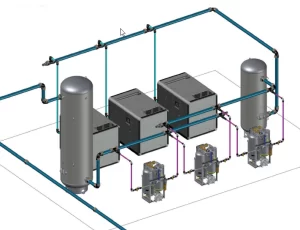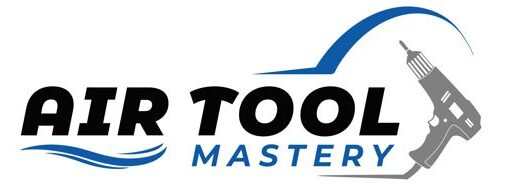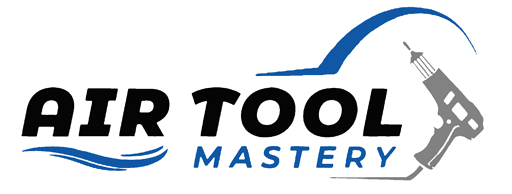A compressed air system is an intricate network of machinery and equipment that generates, treats, and distributes compressed air to different processes within an industrial setting. The system mainly consists of an air compressor, which produces compressed air, and additional components like dryers, filters, and receivers that ensure the air is clean and dry. The compressed air is then transported through piping to different points of use.
The Importance and Applications of Compressed Air Systems
Compressed air systems are crucial in a broad spectrum of industries due to their versatility, safety, and accessibility. They serve as a reliable power source for tools and equipment, offering control and flexibility unmatched by other energy systems. Compressed air can be stored and used at different pressures, making it adaptable to various industrial needs.
In terms of applications, compressed air systems are found in a myriad of sectors. Manufacturing industries use them extensively for powering pneumatic tools, operating machinery, and process control systems.
They are also integral in the pharmaceutical industry, where they ensure hygienic and controlled environments. In the automotive industry, they power tools for assembly, painting, and cleaning processes. Utilities, mining, and construction are other sectors where compressed air systems are employed significantly. Overall, the importance of compressed air systems in modern industry cannot be overstated.
Compressed Air Distribution System
A meticulously designed compressed air distribution system is pivotal for the efficient operation of industrial applications. Ensuring a consistent supply of compressed air with minimal pressure loss requires expert knowledge of system layout and component compatibility. Optimal piping material selection, strategic layout planning, and the integration of energy-efficient practices are fundamental principles in the development of superior compressed air distribution systems, directly impacting operational efficiency and energy consumption.
Compressed Air Cooling System
The implementation of an effective compressed air cooling system plays a crucial role in maintaining the quality and longevity of compressed air operations. By reducing air temperature, these systems significantly lower the moisture content in compressed air, preventing corrosion and damage to the air distribution infrastructure. Advanced cooling technologies and the application of precision engineering in the design of cooling systems ensure the reliability and durability of compressed air operations across various industries.
Compressed Air Pipe System
The backbone of any compressed air system is its piping network. A well-engineered compressed air pipe system enhances performance by facilitating the smooth and efficient flow of air. Key considerations such as pipe diameter, material selection, and layout design are paramount in minimizing pressure drops and energy costs. Expertise in the latest advancements in piping materials and installation techniques is essential for constructing robust systems that deliver compressed air effectively to its point of use.
Compressed Air Systems
Comprehensive knowledge of compressed air systems encompasses not only the design and installation but also the operation and maintenance of these complex systems. With a focus on energy efficiency and system reliability, state-of-the-art compressed air systems are designed to meet the specific needs of different industry sectors. Continuous innovation in air compression technology and a commitment to system optimization are marks of authority in this specialized field.
Compressed Air Monitoring System
A robust compressed air monitoring system provides the data necessary to optimize system performance and energy usage. Through real-time monitoring and analysis, these systems identify fluctuations in air quality, pressure, and temperature, enabling timely adjustments and maintenance. The integration of intelligent monitoring technologies exemplifies best practices in ensuring the operational integrity and cost-effectiveness of compressed air systems.
Compressed Air System Design
Exceptional compressed air system design combines the principles of engineering excellence with environmental sustainability. Tailoring systems to the unique requirements of each facility, while incorporating energy recovery and air treatment solutions, highlights expertise in creating systems that are both effective and responsible. Rigorous attention to detail in the planning and execution phases is crucial in devising systems that are efficient, reliable, and aligned with industry standards and regulations.
Working Principles of Compressed Air Systems

The heart of a compressed air system is the air compressor, which generates compressed air by reducing its volume. This process involves three stages:
Compression
Air from the atmosphere is drawn into the compressor and compressed to high pressure.
Cooling
The hot, pressurized air is then cooled down in a separate chamber using either an aftercooler or intercooler. This stage prevents damage to the compressor and its components due to excessive heat.
Condensation
In this final stage, the compressed air is passed through a moisture separator to remove any water or oil that may have accumulated during the previous stages. The result is clean, dry compressed air ready for use in different applications.
Components of a Compressed Air System
A compressed air system comprises numerous components that work in synergy to generate, condition, distribute, and utilize compressed air. Understanding these components and their functionalities is pivotal for the effective operation and maintenance of the system. The main components of a compressed air system include:
Air Compressor
At the heart of the compressed air system is the air compressor. This is the machine that generates compressed air by taking in ambient air and compressing it.
Aftercoolers
The compression process usually generates a lot of heat, and the generated compressed air is often at high temperatures. To reduce these high temperatures, aftercoolers are used. They cool the compressed air down to a safer and more manageable level, protecting downstream equipment and processes from heat damage.
Air Receivers
Air receivers, or storage tanks, play a crucial role in stabilizing the pressure and flow rate of the compressed air. They store the pressurized air, allowing the system to meet sudden demand surges without overworking the compressor. In addition, they provide a space where moisture and other contaminants can condense out of the air.
Dryers
Once cooled, the compressed air often contains moisture, which can be detrimental to downstream processes and equipment. Dryers are used to remove this moisture. There are different types of dryers, including refrigerated dryers, desiccant dryers, and membrane dryers, each offering different levels of drying for various applications.
Filters
Even after drying, the compressed air may still contain particulates, oil, and other contaminants. These are removed using filters, which are installed at various points in the system. Different filters with varying filtration levels are used to achieve the desired air quality.
Distribution System
The distribution system consists of the piping and valves that carry the compressed air from the generation point to the points of use. The design of the distribution system is vital for minimizing pressure losses and ensuring efficient use of the compressed air.
Types of Compressed Air Systems
Compressed air systems come in a variety of types, each of which is designed to meet specific needs and requirements. Generally, these systems are categorized based on their design and functionality.
The first category includes Positive Displacement Compressors which operate by filling an air chamber with air and then reducing the volume of the chamber. Rotary screw compressors, piston compressors, and scroll compressors are all examples of positive displacement compressors. Each of these has a unique mechanism for generating compressed air. For instance, rotary screw compressors use two interlocking screws that push air through the compressor, while piston compressors use a piston and cylinder arrangement.
Rotary Screw Compressors are renowned for their efficiency and durability, particularly in industrial environments where large volumes of high-pressure air are required. They provide continuous duty cycle and are ideal for applications where the compressor needs to run for long periods.
Piston Compressors, on the other hand, are great for intermittent use and provide high pressure but lower volume of air. They are typically used in automotive workshops, small metal fabrications, woodworking workshops, and similar environments.
Single-stage, Two-Stage and Multi-stage Compressors
Single Stage
Single-stage compressors involve a single piston stroke to compress the air to the final pressure. These compressors are suitable for applications requiring up to 150 PSI and are often used for tasks such as inflating tires, airbrushing, and powering air tools.
Two-Stage Compressors
Two-stage compressors incorporate a second stage of compression. The air is initially compressed by the first stage, cooled, and then compressed again by the second stage to reach a higher pressure. This process allows two-stage compressors to achieve pressures up to 200 PSI, making them ideal for heavy-duty applications such as auto body shops or industrial manufacturing facilities.
Multi-Stage Compressors
Multi-Stage Compressors take this process a step further by having additional compression stages. With each stage, the air is further compressed, allowing these compressors to reach extremely high pressures. They are typically used in applications such as petroleum exploration or high-pressure gas supply. .
Choosing the Right Type of Compressor
There are various types of compressors available, each with their own strengths and weaknesses. It is essential to choose the right type for your specific needs to ensure optimal efficiency. Reciprocating compressors are best suited for intermittent or small-scale operations, while rotary screw compressors are better for continuous and larger-scale applications. Centrifugal compressors are ideal for high-flow, high-pressure applications.
Energy-saving strategies
1. Heat Recovery
One way to increase efficiency and reduce energy costs in a compressed air system is through heat recovery. The process of compressing air generates a significant amount of heat, which is often wasted. By utilizing this excess heat for heating purposes, such as space or water heating, the overall energy consumption can be reduced.
2. Pressure Regulation
Another energy-saving strategy is pressure regulation. Many compressed air systems operate at a higher pressure than necessary, leading to excessive energy consumption. By accurately monitoring and adjusting the pressure according to the specific needs of each application, significant energy savings can be achieved.
3. Proper Maintenance
Proper maintenance is crucial for ensuring the efficiency and longevity of a compressed air system. Regularly checking and replacing filters, cleaning heat exchangers, and inspecting for leaks can help reduce energy waste and prevent costly breakdowns.
Air Quality Considerations
Aside from efficiency and energy-saving strategies, air quality is also an essential factor to consider in a compressed air system. Contaminants such as water vapor, oil, and particulates can negatively impact the performance of equipment and the quality of end products. To maintain air quality, the following steps can be taken:
1. Moisture Removal
Moisture in a compressed air system can cause corrosion, rust, and damage to equipment. Installing proper moisture removal systems such as aftercoolers, dryers, and filters can prevent these issues and ensure clean, dry air.
2. Oil Filtration
Oil lubricated compressors can introduce oil into the compressed air system, leading to potential contamination. By using high-quality filters and separators, oil can be effectively removed from the air before it reaches downstream equipment.
3. Particulate Filtration
Particulates such as dust, dirt, and debris can also negatively impact equipment performance. Installing appropriate particulate filters can prevent these contaminants from entering the compressed air system.
Safety Considerations
While compressed air systems offer many benefits, they can also be hazardous if not used correctly. Here are some safety considerations to keep in mind when working with compressed air:
1. Proper Training
All personnel who work with or operate a compressed air system should receive proper training on its safe use and maintenance.
2. Personal Protective Equipment (PPE)
Proper PPE, such as safety glasses and hearing protection, should be worn when working with compressed air to prevent injury.
3. Regular Maintenance
Regular maintenance of the compressed air system is crucial for safe operation. This includes checking for leaks, proper lubrication, and replacing worn or damaged parts.
4. Pressure Relief Devices
Pressure relief devices should be installed in the compressed air system to prevent over-pressurization and potential explosions.
5. Proper Use of Tools
Compressed air should only be used with tools and equipment specifically designed for its use. Improper use can cause damage or injury.
Conclusion
In conclusion, understanding the components and operation of a compressed air system is crucial for optimal performance and operational safety measures should also be taken into consideration, such as proper training and the use of personal protective equipment. Regular maintenance and the use of pressure relief devices are also important for ensuring safe operation. By following these guidelines, compressed air systems can provide reliable and efficient power for a variety of industrial applications.

